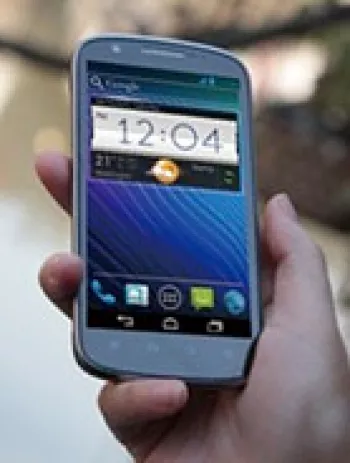
Introduction to the ZTE FTV Phone
The ZTE FTV Phone, released in December 2011, represents a time in mobile history when manufacturers were experimenting with aesthetics and branding partnerships. This phone was part of a collaboration with Fashion TV, targeting a niche audience interested in fashion-forward tech. With a distinct design and a feature set reflecting its era, the FTV Phone holds a unique place in the timeline of smartphones.
Design and Build
The ZTE FTV Phone offers a sleek design with dimensions of 116 x 56.5 x 11.8 mm, making it compact and reasonably slim for its time. Weighing in at just 110 grams, it was lightweight and easy to handle. It came in three color variants: White, Black, and Gold, each catering to different aesthetic preferences. The use of a Mini-SIM slot was typical for devices from this period, reinforcing its connection to the early 2010s mobile architecture.
Display Features
The phone is equipped with a 3.5-inch AMOLED display, which was a significant feature then due to its vibrant colors and decent outdoor visibility. With a resolution of 480 x 800 pixels and a pixel density of approximately 267 ppi, it delivered sharp and clear visuals suitable for its screen size, though modest by today’s standards.
Performance and Processing Power
Under the hood, the ZTE FTV Phone featured the Qualcomm MSM7227 Snapdragon S1 chipset, paired with a 600 MHz ARM 11 CPU and Adreno 200 GPU. This configuration was relatively common among Android devices of that era, offering satisfactory performance for basic smartphone tasks. With Android 2.2 (Froyo) as its operating system, it lacked the fluidity seen in later versions of Android but was adequate for the time.
Memory and Storage
The phone came with 512MB of RAM and 512MB of internal storage, which could be expanded thanks to the microSDHC slot that supported additional storage. A 2GB microSD card was included in the package, providing users with some initial external storage to manage their files, apps, and media.
Camera Specifications
The ZTE FTV Phone was equipped with a single 3.15 MP autofocus rear camera. It supported CIF video recording at 15fps. While these specifications might seem limited by modern standards, they were quite standard for entry-level smartphones in 2011, allowing for basic photography and video capturing capabilities appropriate for casual use.
Connectivity and Communication Features
In terms of connectivity, the ZTE FTV Phone supported GSM and HSPA networks, including 2G bands (GSM 900/1800/1900) and 3G bands (HSDPA 900/2100), with data speeds up to HSPA 7.2/5.76 Mbps. For wireless connectivity, it included Wi-Fi 802.11 b/g capabilities along with hotspot functionality, Bluetooth 2.1 with A2DP and EDR support, and GPS with A-GPS for positioning services.
Additional Features
The phone was equipped with a few sensors, namely an accelerometer, proximity sensor, and a compass, contributing to a variety of uses from auto screen rotation to navigation. It also featured an FM radio with RDS for enjoying music and radio on the go, catering to users who preferred broadcast media.
Battery Life
A removable Li-Ion 1250 mAh battery powered the device, allowing for a stand-by time of up to 192 hours and a talk time of about 4 hours. Although modest, this battery life was sufficient for a day's worth of moderate usage in the era before power-hungry apps and features became the norm.
Conclusion
The ZTE FTV Phone stands as a notable representation of early 2010s smartphones, balancing functionality and style in its collaboration with Fashion TV. While the tech world has progressed far beyond the specifications and capabilities of devices from this period, the FTV Phone remains a symbol of the evolving nature of mobile technology and lifestyle branding. Its intuitive design, combined with essential smartphone features, made it an interesting option for those seeking a fashionable yet functional device in its time.
ZTE FTV Phone Key Features
- Supports GSM and HSPA network technology.
- Compact and lightweight design with dimensions: 116 x 56.5 x 11.8 mm and weight: 110 g.
- Equipped with a 3.5-inch AMOLED display with a resolution of 480 x 800 pixels.
- Powered by a Qualcomm MSM7227 Snapdragon S1 chipset with 600 MHz ARM 11 CPU and Adreno 200 GPU.
- Comes with Android 2.2 (Froyo) operating system.
- Offers 512MB of RAM and an additional 512MB of internal storage, expandable via microSDHC card slot (2 GB included).
- Features a 3.15 MP main camera with autofocus.
- Supports Wi-Fi 802.11 b/g, Bluetooth 2.1 with A2DP and EDR, GPS with A-GPS, and Stereo FM radio with RDS.
- Includes a removable 1250 mAh Li-Ion battery.
- Available in three colors: White, Black, and Gold.
Drawbacks of ZTE FTV Phone
- Lacks support for 4G and 5G networks, only supports GSM/HSPA.
- Outdated Android 2.2 (Froyo) operating system, which lacks support for modern apps and security features.
- Low-performance hardware with a 600 MHz ARM 11 CPU and limited 512MB RAM.
- Small low-resolution display with a screen size of only 3.5 inches and a screen-to-body ratio of ~53.2%.
- Minimal internal storage with just 512MB, although expandable via microSDHC.
- Low-quality camera: Main camera with only 3.15 MP and video recording at CIF@15fps.
- No front-facing selfie camera available.
- Battery capacity of only 1250 mAh, offering up to 4 hours of talk time which is insufficient by modern standards.
- Device is discontinued, making it difficult to find support or replacement parts.


View Also
More Phones
All Rights Reserved +14038 Phones © Mobilawy 2025

























